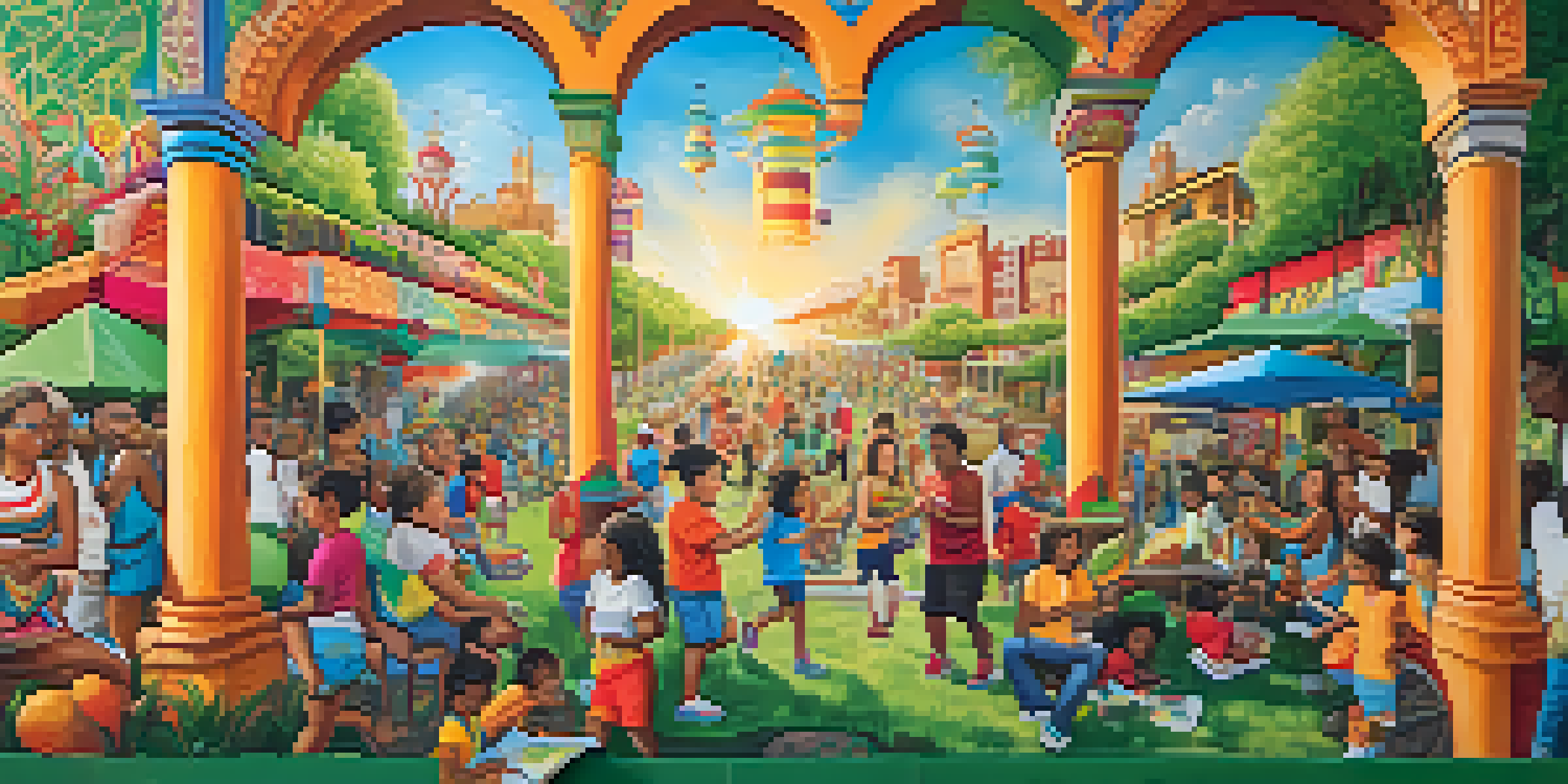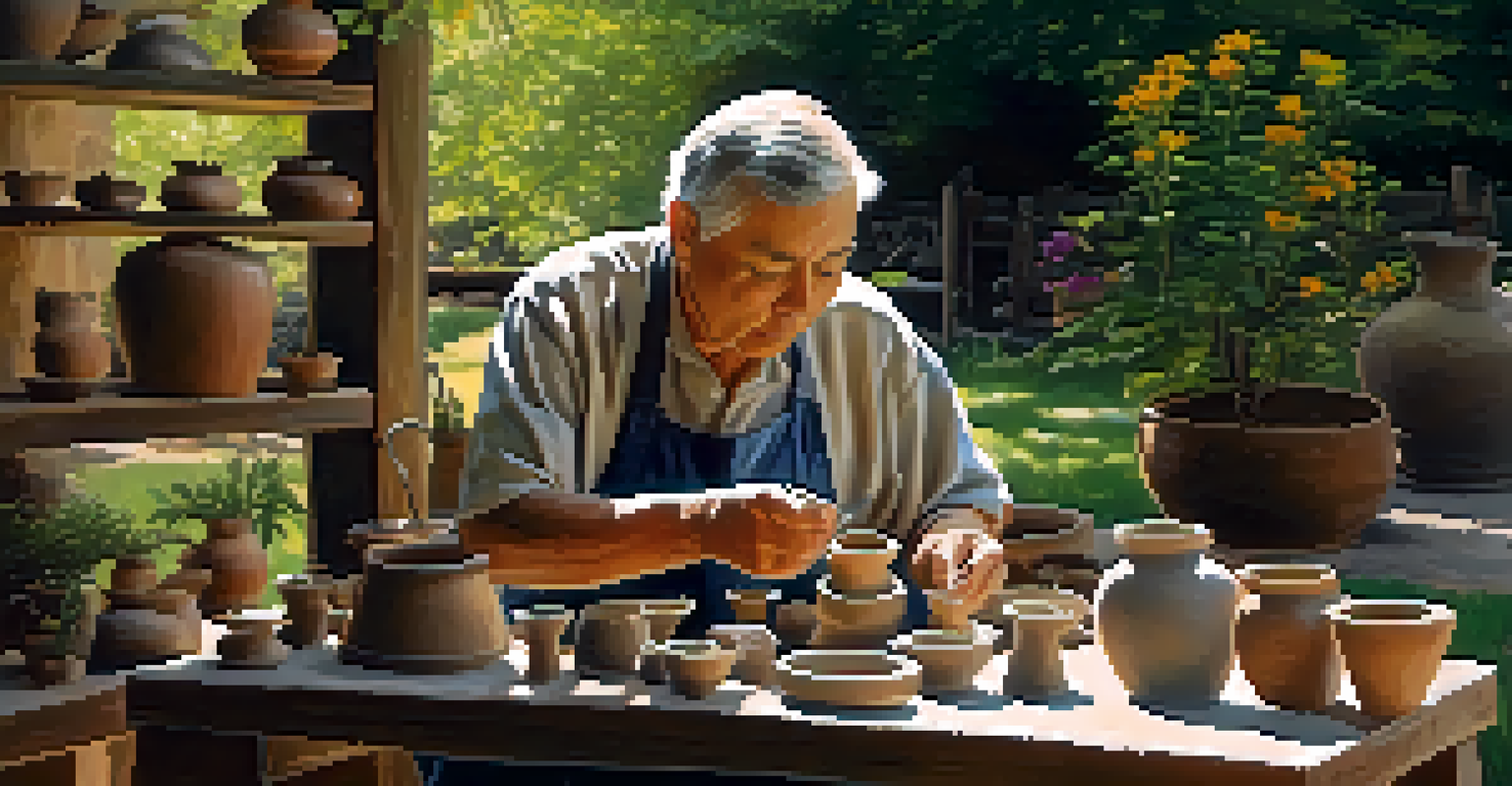Transformative Art: How Creativity Shapes Personal Identity

Understanding Transformative Art and Its Impact
Transformative art is more than just visual appeal; it serves as a powerful tool for personal expression and growth. It encourages individuals to explore their feelings, thoughts, and experiences on a deeper level. When we engage with art, whether by creating or appreciating it, we often find a reflection of our own identities.
Art is not freedom from discipline, but disciplined freedom.
This dynamic process allows us to examine who we are, where we come from, and how we relate to the world. For instance, a painter may use their canvas to process grief, ultimately transforming pain into a beautiful piece of art. In this way, art becomes a medium for introspection and self-discovery.
By understanding transformative art, we can appreciate how creativity shapes our identities. Engaging with various forms of art helps us connect with others and fosters a sense of belonging in a broader community.
The Connection Between Creativity and Self-Discovery
Creativity is often seen as a vehicle for self-discovery, allowing us to explore our thoughts and emotions in a tangible way. When we create, whether through painting, writing, or music, we unlock parts of ourselves that may have been hidden or unexplored. This journey of self-exploration is essential for personal growth and identity formation.

For example, a musician may find their voice while writing songs about their life experiences, ultimately shaping their identity as an artist. This process is akin to peeling back the layers of an onion, revealing deeper truths with every stroke of the brush or note played.
Art as a Tool for Self-Discovery
Engaging with art encourages individuals to explore their emotions and identities, facilitating personal growth and introspection.
Through creative expression, we can confront our fears, desires, and beliefs, leading to a more nuanced understanding of ourselves. This exploration is not only liberating but also crucial for developing a strong sense of self.
Art as a Reflection of Cultural Identity
Art has a profound ability to reflect cultural identity, serving as a mirror to society. It encapsulates the beliefs, traditions, and values of a community, allowing individuals to connect with their heritage. When artists draw inspiration from their culture, they create works that resonate deeply with shared experiences.
Every artist was first an amateur.
For instance, a mural depicting local history can evoke a sense of pride and belonging among community members. This connection reinforces personal identity by reminding us of our roots and the narratives that shape our lives. Through such art, we are reminded of the importance of our cultural heritage.
Moreover, as we engage with art that reflects our culture, we also gain insights into others' experiences. This exchange fosters empathy and understanding, ultimately enriching our personal identities.
The Role of Art in Healing and Personal Growth
Art has long been recognized for its therapeutic qualities, offering a pathway to healing and personal growth. Many individuals turn to creative outlets as a means of coping with life’s challenges, such as trauma, loss, or mental health struggles. This process of creating art can be incredibly cathartic and transformative.
For example, someone dealing with depression might find solace in painting, using colors to express emotions they find difficult to articulate. This act of creation not only serves as a release but also aids in reshaping their identity by fostering resilience and self-acceptance.
Cultural Identity Through Expression
Art reflects cultural identity, allowing individuals to connect with their heritage and fostering a sense of belonging within their communities.
As we navigate our personal journeys through art, we learn to embrace vulnerability and authenticity. This process can facilitate profound change, helping us emerge stronger and more connected to our true selves.
How Community Art Projects Foster Identity
Community art projects offer a unique platform for individuals to come together and share their stories through creativity. These initiatives encourage collaboration and collective expression, allowing participants to explore their identities in a supportive environment. When people work together on artistic endeavors, they often find a sense of belonging and shared purpose.
For instance, a community mural project might invite residents to contribute their visions of home, blending individual stories into a collective masterpiece. This not only strengthens community bonds but also reinforces each participant's sense of identity within the larger group.
By participating in such projects, individuals can see firsthand how their unique experiences contribute to the fabric of the community. This realization deepens their understanding of themselves and enhances their personal identity.
The Influence of Digital Art on Identity Exploration
In the digital age, art has taken on new forms and mediums, expanding the ways we can express our identities. Digital art platforms allow individuals to experiment with various styles and share their work with a global audience. This accessibility fosters a sense of community among artists and viewers alike, facilitating discussions about identity and creativity.
For example, social media platforms often serve as galleries where artists showcase their work, receive feedback, and connect with others who share similar experiences. This interconnectedness can be empowering, encouraging individuals to explore their identities more freely and confidently.
Community Art Fosters Connection
Participating in community art projects enables individuals to share their stories collaboratively, reinforcing their sense of identity within a collective.
Moreover, digital art can serve as a powerful tool for social change, allowing marginalized voices to be heard. By sharing their stories through digital mediums, individuals can challenge stereotypes and redefine their identities in ways that resonate with broader audiences.
Embracing Art as a Lifelong Journey of Identity
The journey of self-discovery through art is not confined to any age or stage of life; it is a lifelong pursuit. As we navigate different experiences, our identities continue to evolve, and our creative expressions will shift accordingly. Embracing art as a vehicle for growth encourages us to remain open to change and exploration.
For instance, a retiree might take up pottery for the first time, discovering a new passion that reshapes their sense of self. This willingness to experiment and learn can lead to unexpected revelations about who we are and who we aspire to be.

Ultimately, art reminds us that our identities are fluid and dynamic. By engaging with creativity throughout our lives, we can continually redefine ourselves and celebrate the ever-changing tapestry of our experiences.